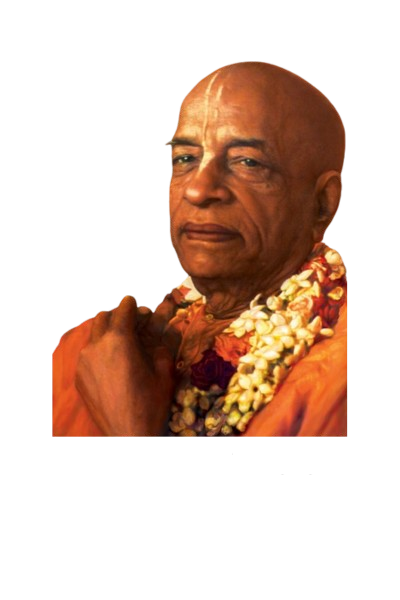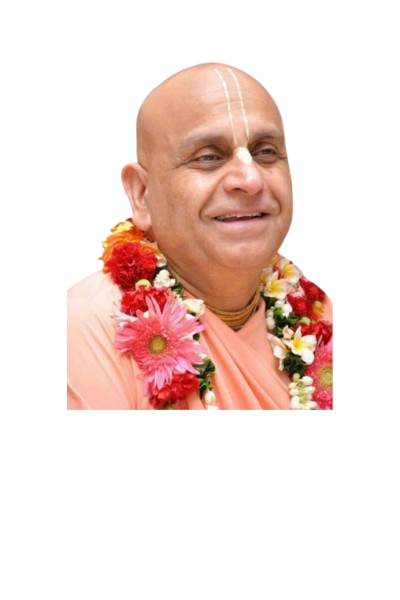About Us
Bhakti Vriksha is a small group of congregational devotees. It’s a gathering which happens once in a week in order to practice, to grow and to preach the process of Bhakti Yoga based on Srimad Bhagwad Gita and Srimad Bhagwatam. It’s like a little family unit within the greater community of the temple. We include people of all classes, castes and educational backgrounds to build a very holistic community cooperating together to bring about the spiritual revolution.
What does the term Bhakti Vriksha mean?
The Sanskrit words Bhakti and Vriksha mean “devotion” and “tree” respectively, so Bhakti Vriksha literally means “tree of devotion.
”Why is it called “Bhakti-vriksha”?
In Shri Caitanya-caritamrita, Lord Caitanya and His movement are compared to the tree of devotion, the Bhakti-Vriksha. Srila Prabhupada writes in his summary of chapter nine of Adi-lila:
“It is figuratively described that both the tree itself and the trunk of the tree are Shri Caitanya Mahaprabhu.… The tree surrounds the entire world, and the flowers of the tree are to be distributed to everyone. In this way the tree of Lord Caitanya Mahaprabhu intoxicates the entire world.”
Every small group of Bhakti-Vriksha’s congregation is therefore a branch of the branch, stemming from Lord Caitanya (the tree of bhakti). The Bhakti-vriksha group is a type of Nama-hatta group that is especially geared toward branching out. Just as in a tree, a branch of a certain thickness branches off into two; and the branching process continues until the tree has thousands and thousands of branches, all connected to the main root. Lord Caitanya is the original root, and even one single branch from the Caitanya tree can grow and form thousands of sub-branches, small twigs, leaves, and so on. We are part of the Caitanya tree and Srila Prabhupada is our connection.
What is the aim of Bhakti Vriksha programme?
The tree signifies that although we come from many different walks of life, we all have common roots – the aim of Bhakti Vriksha is to understand those roots through spiritual learning and practice in three key areas:
- Knowledge (What to practice, and why)
- Skills (How to practice)
- Values (What is right)
So how does Bhakti Vriksha actually work?
Meeting every week in small, informal and interactive groups, Bhakti Vriksha members are taken through a structured curriculum covering various aspects of spiritual life. Each session explores a specific topic, pulls out key lessons from that topic, and explains how to practically apply those lessons in day-to-day life. In order to continually develop and enrich the spiritual understanding of members, they are taken through different levels supported by guided study of key bhakti texts such as the Bhagavad Gita. This progression is achieved through a variety of mediums, including group discussions, quizzes, presentations, retreats and day picnics. Each Bhakti Vriksha group also has a friendly personal guide who is there to provide support and encouragement.
What does a Bhakti Vriksha meeting constitute?
The meeting has six parts: association, kirtan, japa, discussion, question answers and finally prasadam. Bhakti-vriksha groups meet once every week, in the home of one of the members. Even after the weekly get-together, the members act as friends, keep in touch with each other, and participate in outreach programs and preaching excursions.
How is Bhakti Vriksha as a community?
All three experiences of community—in a small group, in a larger gathering, and at a big festival—are essential in the life of the devotee. The small group gives the opportunity to share deeply and intimately with close friends. The weekend Sunday Feast or gathering of the groups provides the chance to enthusiastically celebrate with many devotees. Celebrations like Ratha-yatra or the Mayapur and Vrindavana Yatra, offer the great inspiration of seeing Krsna consciousness practised by thousands and shared with the masses.
How can Bhakti Vriksha help one to deal with day-to-day life, especially during hard times?
Our actions determine our daily habits, which in turn determine how we shape our lives. With this in mind, Bhakti Vriksha members are guided to seek constructive association and opportunities that ultimately transform the way they go through their day. Particularly during difficult times, the presence of our dedicated care team is a blessing – they support the individual by listening to their challenges thoroughly and devising potential solutions.
Bhakti Vriksha Amritsar
Started in 2014, in the Holy City of Amritsar, HG Hari Kripa Prabhu under the kind guidance of HG Inderanuj Prabhu, has been tirelessly preaching Krishna Consciousness under the banner of Bhakti Vriksha through daily classes at various locations all over Amritsar. Hundreds of residents of Amritsar are partaking in these classes and getting spiritually benefitted.
Who can Join?
These classes are open to anybody and everybody. The only prerequisite is sincere inquiry and an open mind.
For joining contact (M) 92168-15777

